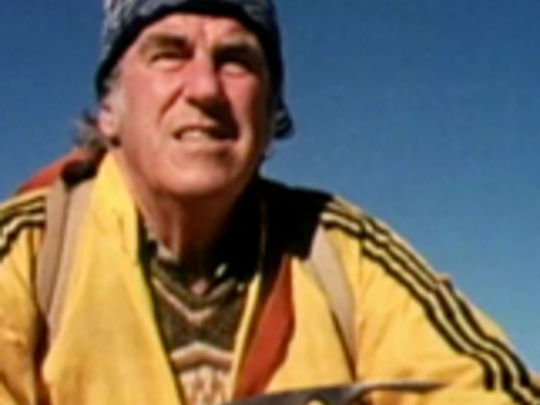
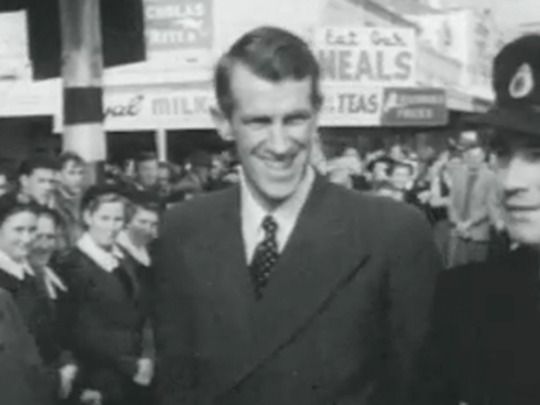
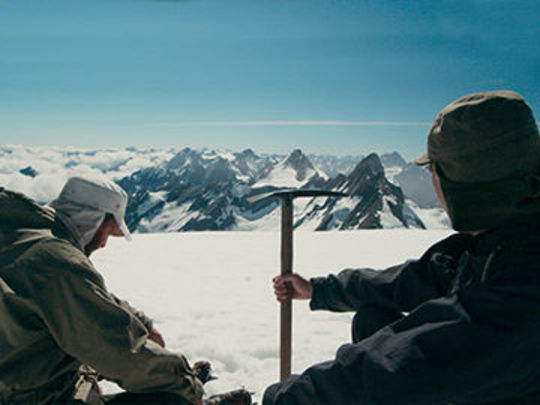
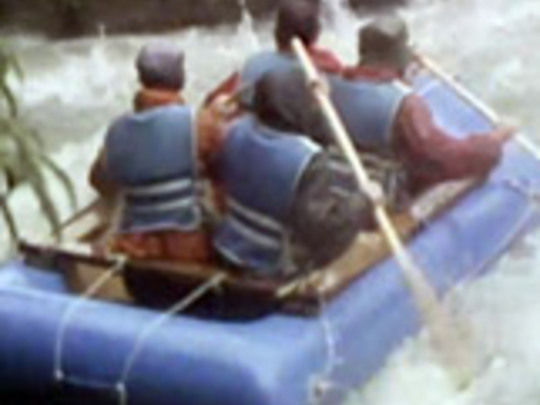
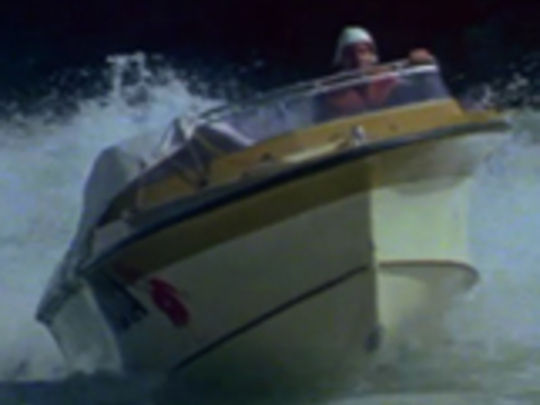
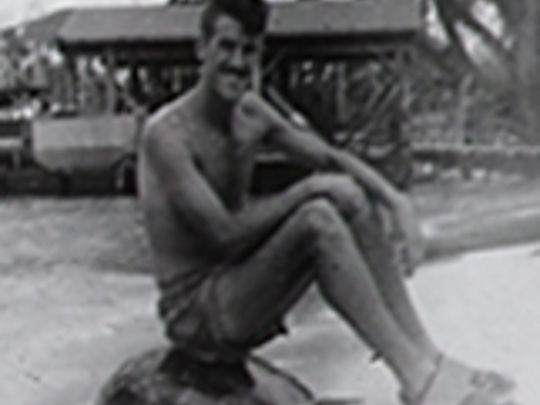
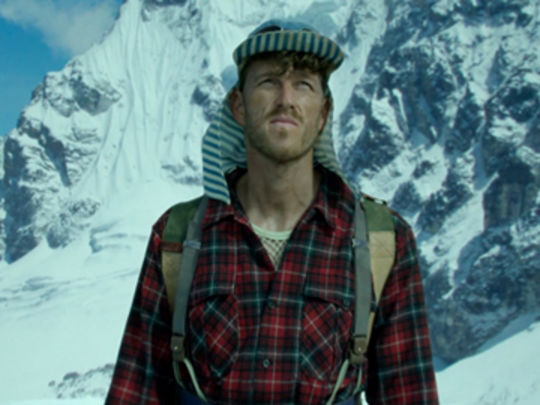
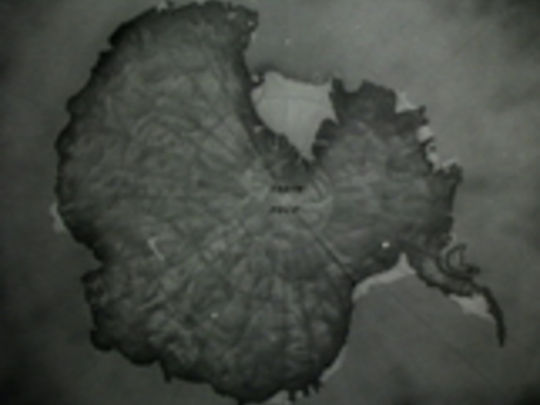
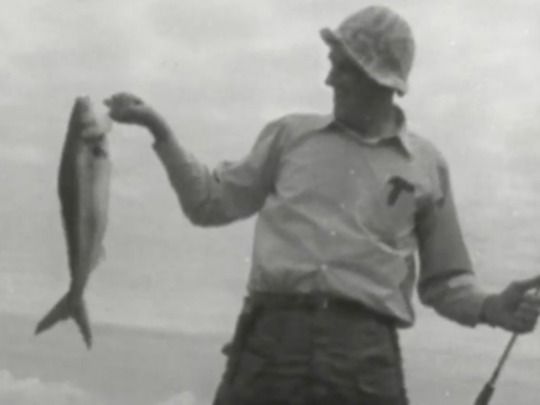
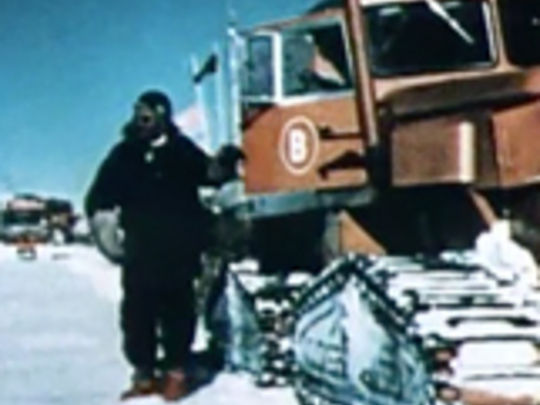
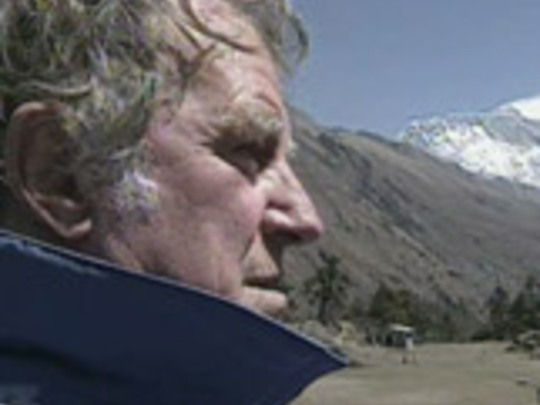
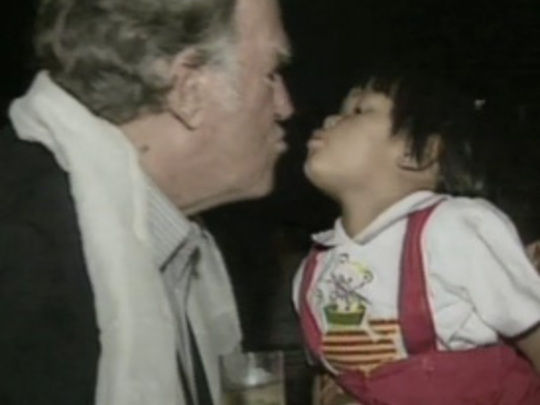
The Sir Edmund Hillary Collection
The Sir Edmund Hillary Collection
This collection has two backgrounds:
We Could Be Heroes
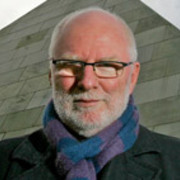
Planet Ed
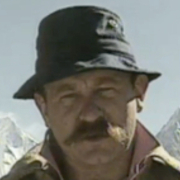
We Could Be Heroes
By Tom Scott 16 Oct 2013
Like many New Zealanders of my generation I grew up in a country that seemed suffocatingly dull. Tucked away at the bottom of the world, our one virtue was that we were a good place to bring up children. Comedians joked that New Zealand was where Austin Sevens went to die. The English gourmet and writer Clement Freud said he went to New Zealand once, and that it was closed.
The two things that sustained me during the tedium of the 50s and early 60s was that little old New Zealand had produced the first man to split the atom, and the first man to stand on top of the world. Given Hiroshima and Nagasaki, a cloud in the shape of a large mushroom hangs over Lord Rutherford’s work. But Ed Hillary’s feat remains a glittering unassailable achievement, that with the passing of time and the rising death toll on Everest, looks all the more remarkable.
He is a once and for always hero. Long after the people who clog the headlines today have joined the carbon cycle, he and Tenzing will be remembered because they belong to mankind the same way Columbus, Amundsen and Lindberg did before them, and Yuri Gagarin and Neil Armstrong did after them. His name is part of the collective consciousness, allowing American writer David Halberstam to dismiss some would-be celebrity as “The Ed Hillary of social climbing”.
Whether it’s driving tractors to the South Pole, hunting for Yeti, going against the flow up the Ganges or countless Kiwi adventures and ascents, ‘hero’ and ‘Hillary’ are entwined.
And ‘humanitarian’. High in the rugged hills of Eastern Nepal, in the villages nestling at the base of the Everest massif, Sherpas know him simply as the ‘Bara Sahib’. These are hardy people not given to displays of emotion, but when asked to describe their relationship with him they respond quietly, with tears in their eyes, “He is our mother and our father.”
In New Zealand we like to think our most famous son is one of us. His virtues of great physical strength, steely determination, moral courage, genuine modesty, decency and compassion are our virtues writ large — somehow he represents the better part of ourselves.
I first met him on 4 October 1990 on a trip to Canberra as part of the Sesqui Centenary. He was the main speaker at a black tie dinner and I was the warm up act. On the way across he sat beside me and hardly said a word. In Sydney we had to go to another terminal to catch a connecting flight to the Australian capital and there wasn’t much spare time. Before I had a chance to offer him some assistance his giant frame lumbered off into the crowd. “Poor old bugger,” I thought as I scrambled for a cab in the unseasonal heat, “I hope he makes it.” Drenched in sweat I barely made it myself. Cool as a cucumber he was waiting for me at the air bridge, looking at his watch. “You had me worried me there for a bit.” He grinned broadly.
That night he gave a great speech that had his audience spellbound. The next day he was besieged at Sydney International Airport by autograph hunters of every shape and size, creed and hue. We had drunk a bit of whiskey together by then and I asked him why his life had never been filmed. “Because the right person hasn’t asked,” he replied. I then inquired if I was suitable. For reasons I don’t yet comprehend but am eternally grateful for, he replied that I probably was.
- Tom Scott made his directorial debut with four-part documentary Hillary: A View from the Top, which won the 1998 New Zealand Television Award for Best Factual Series. He went on to write 2016 mini-series Hillary.
Planet Ed
By Mark Sainsbury 16 Oct 2013
In early 1991 I embarked on an adventure I later realised many of my journalistic and filmmaking predecessors had taken before me. I was about to enter the orbit of Sir Edmund Hillary. It started after some prodding from Tom Scott, who pointed out that the great adventurer was now in his 70s and who knows what could happen. We needed to document this extraordinary life, and my part was to start very soon.
So I persuaded TVNZ to send me to Nepal with Sir Ed and June for their annual trip into the Solu Khumbu, to do a series of programmes for the Holmes show. As fate would have it, my selling point of “let's do this before he’s gone” came perilously close to reality.
Ed developed altitude sickness and became gravely ill. He was saved by his own legacy of course. Where we were staying was where Ed had set up one of the clinics to help the Sherpa people, so medical advice and more importantly, oxygen, was on hand. As always, the results when travelling with Ed were spectacular. I not only got to produce a three-part series on his work in the Himalaya but had the gripping rescue footage as Ed was airlifted out of the mountains.
In going through the archives on my return I realised I was just one of many who had stumbled onto this great man with the same idea. You wondered on looking at the list if he’d ever been away from a camera, even from those months in 1953 that changed his life and ours. I say ‘ours’ because Ed impacted on everyone who came into contact with him. As climber Murray Jones once observed, it’s like joining ‘Planet Ed’: nothing is the same again, and he injects so much into your life.
The beauty of filming Ed was he didn’t really seem to care. He wasn’t a show pony or a publicity seeker yet he had an unerring way of providing something fresh for every single programme I ever made with him. I’m convinced the experience would be the same for everyone else.
We filmed him and expedition leader John Hunt, together for the last time, during the 40th anniversary celebrations. With Everest in the background Ed told me one of his jobs on the expedition was to melt water for drinking, and he knew that he’d succeeded when he got to the summit and was able to “have a leak off the side”.
I was gobsmacked, I’d heard him relate the climb story at fundraisers around the world, to the point where Tom and I both reckoned we could do it verbatim: “just another couple of whacks with the old ice axe and we were on the top...” But right on cue he came up with another nugget.
It was like he had kept in reserve all these years a percentage of the war stories. Just enough to freshen up any story, be it 40 or even 50 years later.
Hillary was aware of the power of publicity, but wasn’t a slave to it. And his motivation was never self-aggrandisement but the end goal. More help, more money, more resourses, for his beloved Sherpa friends. He was surprisingly trusting in leaving totally in our hands how we depicted him. Then again, what did he have to fear. The more I reflect on it, the more I realise he was the master whether he knew it or not.
That filming trip in 1991 started a friendship I will value all my life and in many ways my last television experience with Ed was the hardest. I was travelling back up to Auckland one beautiful summer's day when my phone came into range and I saw I had missed calls from Lady June, Helen Clark and my producer. I was supposed to have dinner with Ed and June that night; I knew that wasn’t ever going to happen again.
Several days later Simon Dallow and I hosted the coverage of the state funeral. It took me nearly two months to cry for Ed. After his death there was too much to do. We had to do right by him and everything went into auto-pilot. Then one day it hit me. I had lost a friend. He was a national hero, an icon, a star of film and television but most importantly a friend. But there is some comfort: it’s in the rich reservoir of films and programmes he leaves behind.
- Mark Sainsbury filed a series of stories involving Sir Edmund Hillary for primetime show Holmes in 1991. In 2007 he took over as host of the same timeslot, and presented Close Up for the next five years.